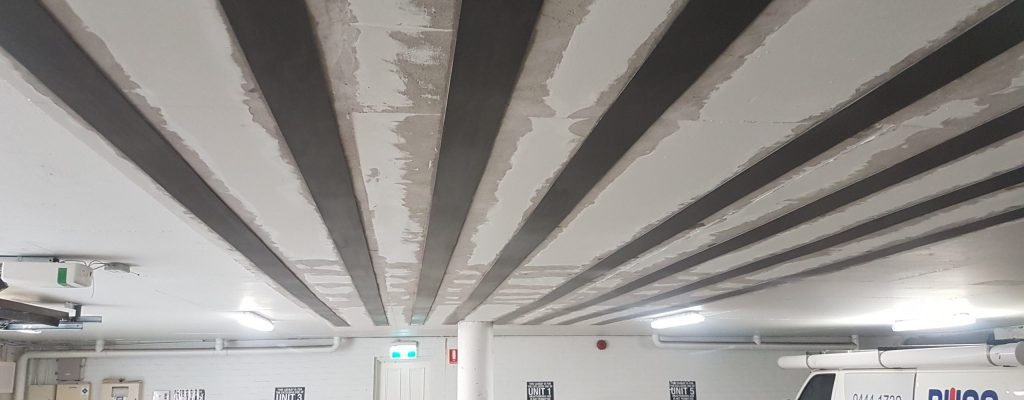
CONCRETE REPAIRS
STRUCTURAL STRENGTHENING
Structural strengthening is a fundamental part of today’s concrete repair industry and may be required for any of the following reasons:
- Increase to load bearing due to higher live loads, installation of heavy machinery/equipment, increased wheel loads or vibrations;
- The modification of structural systems due to the removal of walls/columns and/or openings being cut through concrete slabs;
- Damage to structural members caused by the aging of construction materials, fire damage, corrosion of the steel reinforcement or vehicle impact;
- Improvements or change in use due to limitation of deflections, a reduction of stress in the steel reinforcement and/or a reduction in crack widths;
- To relieve stress generated by design or construction errors;
- Change to building codes; and
- Seismic retrofitting.
CARBON FIBRE
Carbon fibre, made from thin, strong crystalline filaments of carbon, can be added to existing structures to increase their structural strength.
This method of structural strengthening is the most common method of structural reinforcement used throughout the concrete repair industry because of its ability to address structural defects initiated by aging concrete and external corrosion on existing structures.
Carbon fibre is a preferred method of structural strengthening over traditional steel reinforcement because it’s lighter, more versatile, more flexible, less affected by corrosion and has a superior strength to mass ratio.
Additionally, carbon fibre strengthening is a very cost-effective method of structural strengthening as it creates little disturbance to the pre-existing services of the structure during its instalment.
STEEL
Methods of structural steel reinforcements include:
- Steel jacketing is an effective method of structural strengthening. It’s a process by which the damaged section is encased with steel. It’s particularly used for deteriorated columns, piers and piles.
- Steel collars are jackets that surround only part of a column or pier and are usually used to increase support to the slab or beam at the top of the column.
- Steel plates involve strengthening the concrete structure by bonding steel plates to external faces using an epoxy adhesive or mechanical fixings. This method is usually undertaken to increase flexural strength or stiffness by bonding plates to the soffits or top surface beams and slabs.
- The installation of a steel beam to a deteriorated or dislodged concrete beam is fixed in place by chemical anchors with a non-shrink grout packed between the steel beam and the existing concrete slab. The steel beam provides durability and added structural strength to a structure.
The BUSS team is experienced in structural strengthening systems which require expert knowledge and strict compliance with application processes and procedures to ensure structural integrity.
LATEST PROJECTS
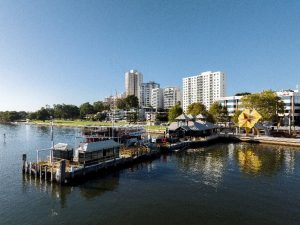
Mend Street Jetty
The Mend Street Jetty, located on the southern shore of the Swan River and constructed circa 1975, operates as a Transperth Ferry Terminal. It’s understood
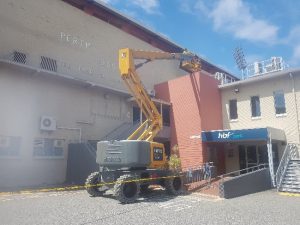
HBF Park
HBF Park, formerly known as Perth Oval and located close to Perth’s CBD, is a sports stadium which hosts sporting events as well as concerts.
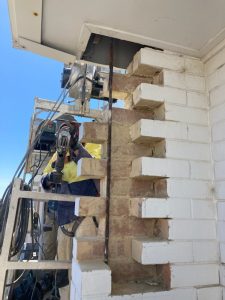
Johnson Court
Johnson Court is a ten-story development comprising 120 retail and residential properties. Cracked bricks on the upper floor balcony nib walls, on the western elevation
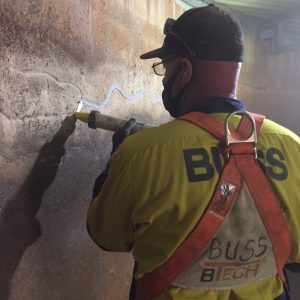
Balgo Community
Balgo is a community located within the Shire of Halls Creek, off Tanami Road, in Western Australia. Established by German missionaries in 1939, Balgo lies

